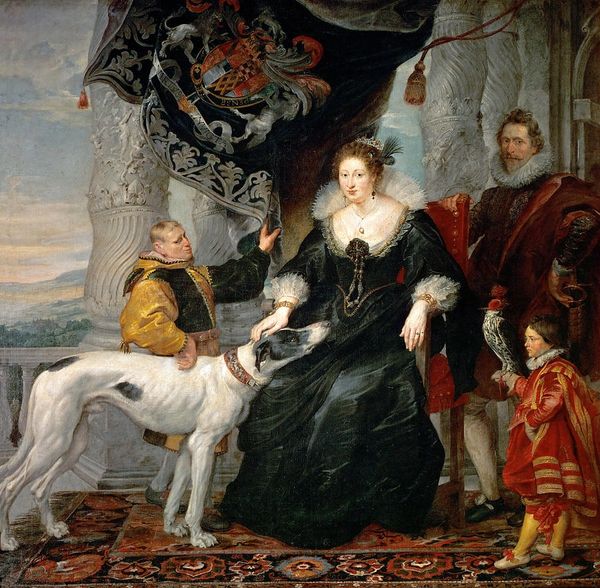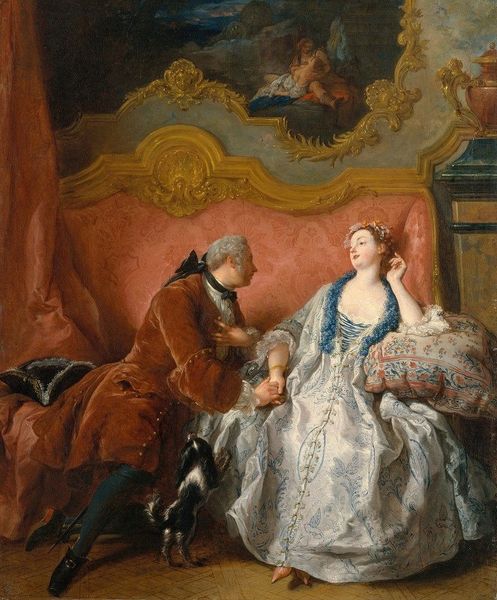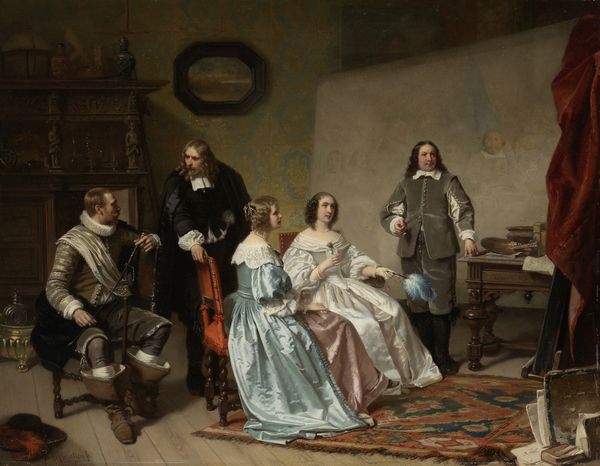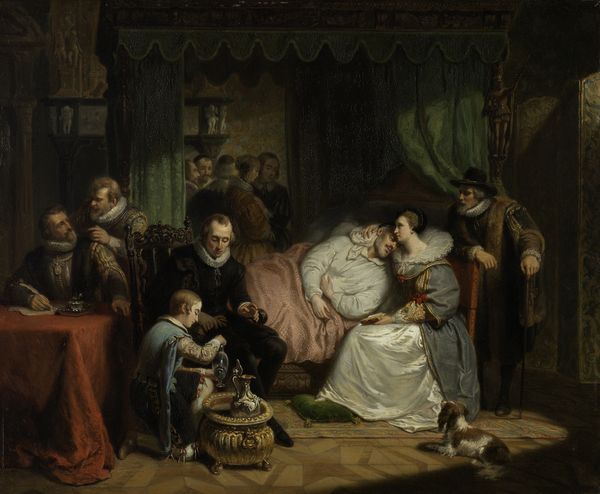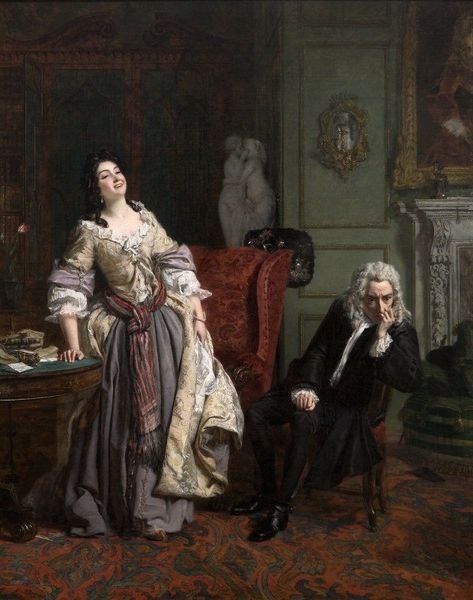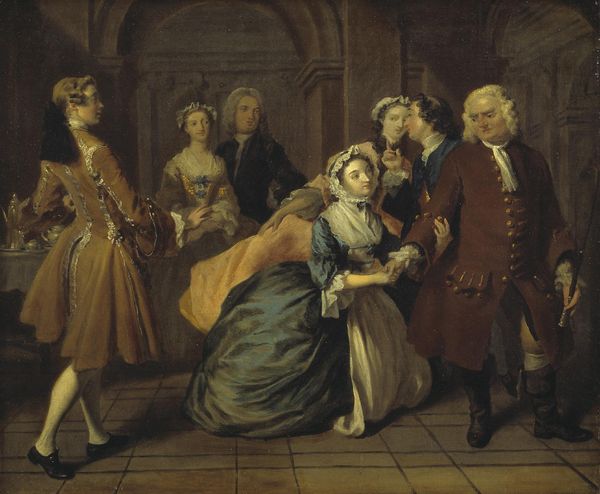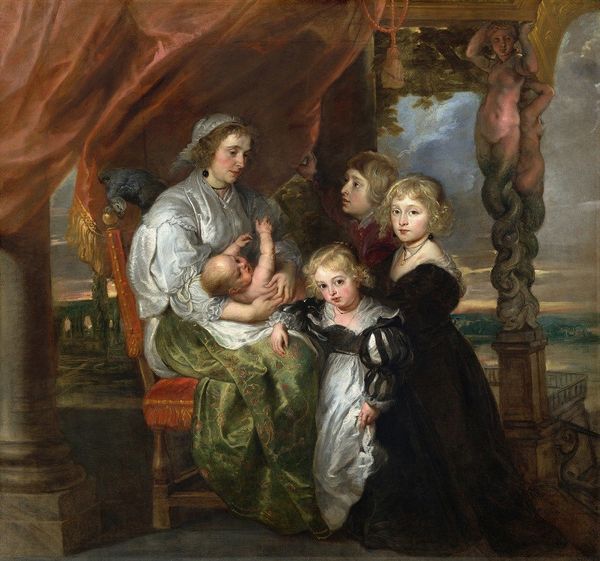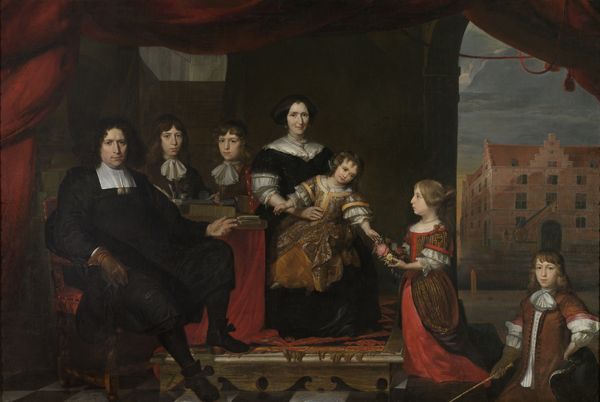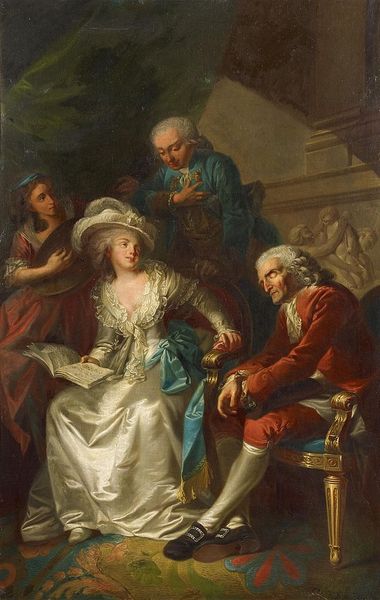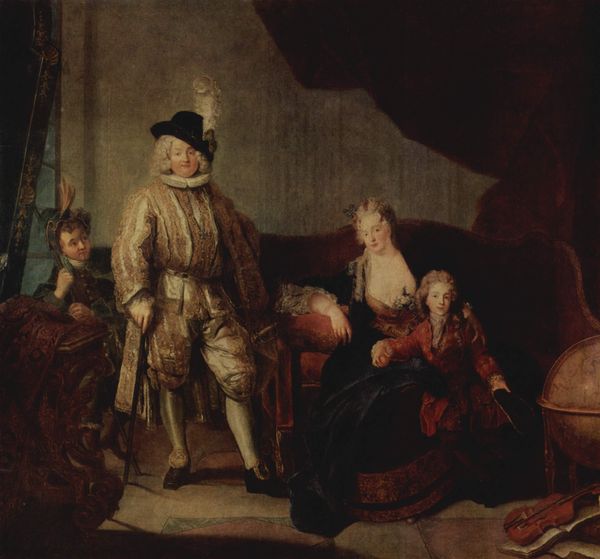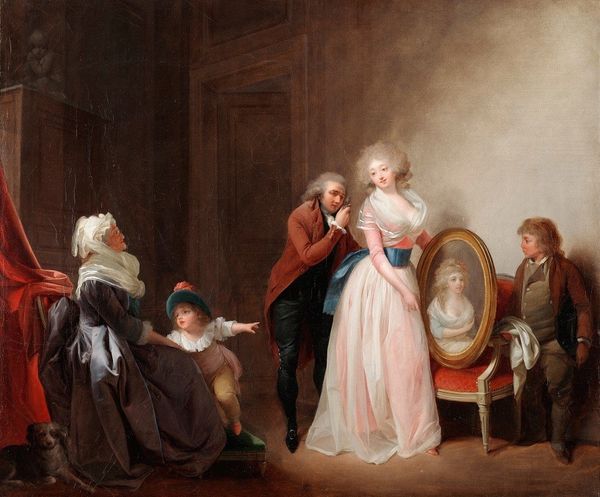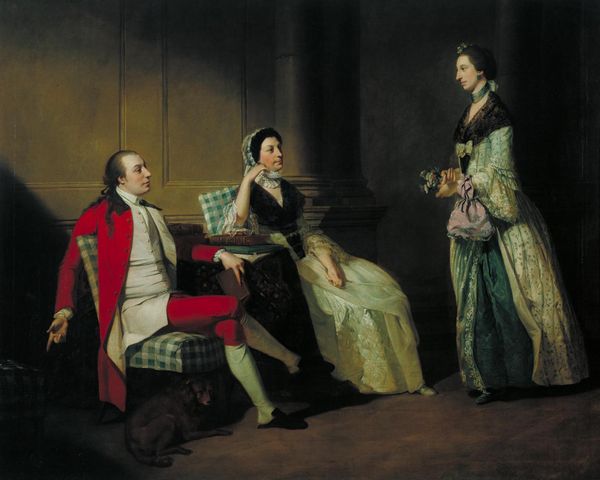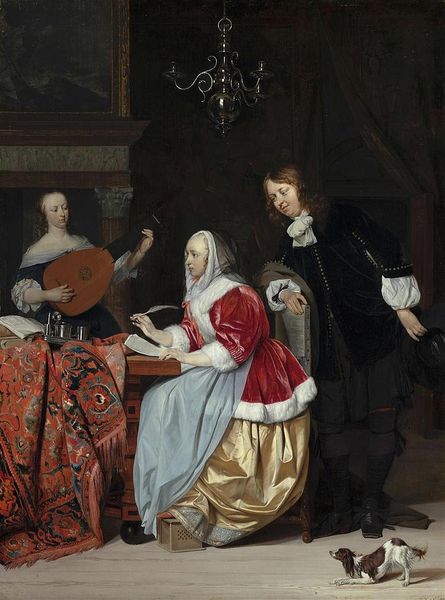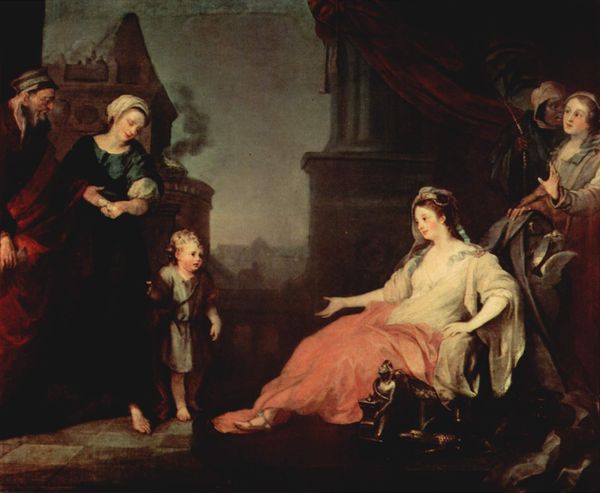![['"Magdalena Moons Begs her Fiancé Francisco Valdez to Postpone the Storming of Leiden another night, 1574', ' Scene from the Eighty Years\' War "'] by Simon Opzoomer](/_next/image?url=https%3A%2F%2Fd2w8kbdekdi1gv.cloudfront.net%2FeyJidWNrZXQiOiAiYXJ0ZXJhLWltYWdlcy1idWNrZXQiLCAia2V5IjogImFydHdvcmtzL2ExMWNjZThlLTVmNDAtNDAxYS1hNDI1LWFkYzZiYzA5NjFjMS9hMTFjY2U4ZS01ZjQwLTQwMWEtYTQyNS1hZGM2YmMwOTYxYzFfZnVsbC5qcGciLCAiZWRpdHMiOiB7InJlc2l6ZSI6IHsid2lkdGgiOiAxOTIwLCAiaGVpZ2h0IjogMTkyMCwgImZpdCI6ICJpbnNpZGUifX19&w=3840&q=75)
['"Magdalena Moons Begs her Fiancé Francisco Valdez to Postpone the Storming of Leiden another night, 1574', ' Scene from the Eighty Years\' War "'] 1840 - 1850
0:00
0:00
simonopzoomer
Rijksmuseum
painting, oil-paint
#
narrative-art
#
painting
#
oil-paint
#
romanticism
#
genre-painting
#
history-painting
#
academic-art
Dimensions: height 78.3 cm, width 65.5 cm, thickness 1.5 cm, depth 6.6 cm
Copyright: Rijks Museum: Open Domain
Editor: So, here we have Simon Opzoomer’s painting, "Magdalena Moons Begs her Fiancé Francisco Valdez to Postpone the Storming of Leiden another night, 1574," from around the 1840s. It’s an oil painting at the Rijksmuseum, and it’s so melodramatic! It feels staged, somehow. What do you see in this piece, in terms of how it was received at the time, maybe? Curator: Well, it's interesting you call it melodramatic. Think about the 19th century and its fascination with historical narrative. This painting clearly caters to that interest, drawing on a specific moment from the Eighty Years' War. Opzoomer's choice of depicting this intimate scene, rather than a battle scene, tells us something about the emerging importance of individual stories within the larger sweep of history. How might the painting's focus on this supposed private plea play into the romantic nationalism of the era? Editor: That's a great point about romantic nationalism. So, the artist is not just depicting history, but actually shaping it, or rather, molding the popular perception of it? Curator: Exactly. Consider how the painting idealizes Magdalena Moons, presenting her as this almost tragic, virtuous figure. And how that impacts how viewers might see Spanish commander Francisco Valdez, and the politics between Spain and the Netherlands during that time. It subtly influences our interpretation of the war, perhaps positioning the Dutch as sympathetic figures resisting oppression. Would you agree that her plea could be viewed as resistance, even though it appears gentle? Editor: I hadn't considered it that way, but yes, it definitely adds a layer of complexity to her character. She’s not just a passive figure. I find it interesting to reflect on the agency they're subtly affording women figures of this era. Curator: And thinking about the art market, this romanticized vision of history likely resonated strongly with the bourgeois public visiting museums and art galleries. Such work bolstered national sentiment while subtly perpetuating cultural narratives that are important to remember. Thanks for prompting a fruitful discussion! Editor: Thanks for clarifying that and broadening my understanding of this artwork! I’ll certainly remember the nuances when I return to see it.
Comments
No comments
Be the first to comment and join the conversation on the ultimate creative platform.
